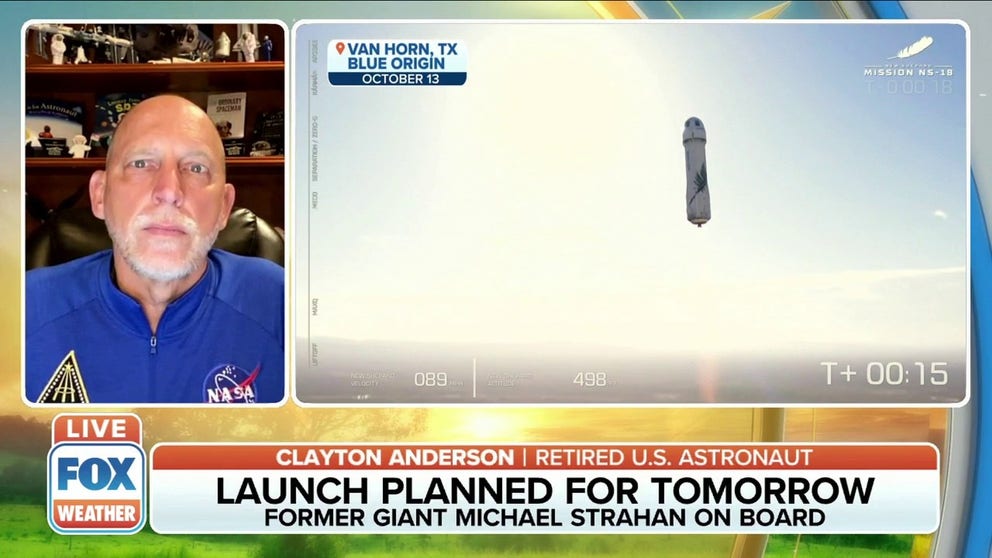How forecasting for Blue Origin launches compares to the space shuttle
New Shepard lands close to where it launches narrowing the forecast area
Blue Origin launch planned for Saturday after delay
Retired astronaut Clayton "Astro Clay" Anderson previews the Blue Origin launch planned for Saturday.
Before Blue Origin launches the New Shepard rocket from West Texas, the weather plays a big role, but the short flight makes the forecasting range less cumbersome.
During the space shuttle program, and now that NASA astronauts are launching with SpaceX, forecasting for human spaceflight is a complicated job that requires looking at a vast swath of the world. With space tourism companies like Blue Origin and Virgin Galactic launching paying customers on short trips, the weather still plays an important role. However, sub-orbital flights are slightly less complicated for a few reasons.
Every launch vehicle, whether it be SpaceX's Falcon 9, ULA's Atlas V or one of the sub-orbital rockets, like New Shepard, has specific launch weather criteria that it can handle during liftoff and ascent.
"Anytime you launch a rocket, no matter where your origin point is, you have to worry about the weather," retired NASA astronaut and author Clayton Anderson said.
During the space shuttle program, mission managers had to consider the orbiter's tiles.
"We had to worry about rain and lighting because the tiles on the shuttles didn’t like that sort of thing," Anderson said. "The same thing to a certain extent here in that wind can make your rocket misbehave, if you will, on the way into space."
Blue Origin delayed its upcoming NS-19 mission with six space tourists because of forecasted winds around the launch site in Van Horn, Texas.
Liftoff and upper-level winds can both be reasons for a launch scrub. Cloud cover and lightning are also significant weather to monitor for a rocket launch.
Anderson said the good thing with Blue Origin is that the rocket takes off and lands all within the same area. The whole event is over in 11 minutes.
"They don’t go too far from where they launched. And so the envelope of weather conditions that you have to look at is much smaller than we did back in the shuttle days," Anderson said.
MORE COVERAGE: Alan Shepard's daughter ready to blast off with Blue Origin carrying on his legacy
For the space shuttle, weather officers with the 45th Weather Squadron would look at the forecast around Kennedy Space Center in Florida and all across the Atlantic Ocean in case of a cross-Atlantic abort, Anderson said.
The same goes for a SpaceX Crew Dragon launch to the International Space Station. Forecasters need to know the weather at sea will be safe if an emergency abort sends the spacecraft away for a water landing. They will look at wave height, winds and other factors to ensure it's safe for the recovery teams and the astronauts.
For New Shepard, the rocket booster comes back for landing as the crew capsule continues to about 66 miles above Earth. The crew will experience a few minutes of weightlessness before buckling back in for a landing.
Parachutes aid the New Shepard crew capsule to land it softly in the West Texas desert. Anderson said forecasters would consider this before launch, too.
"They want the winds to be calm. They want their parachutes to be able to inflate and open when they bring them back to Earth and be safely dropped, gentle down to Earth and not have big winds at high altitudes that could mess them up, move 'em around a little bit."
Blue Origin is targeting Saturday at 8:45 a.m. CT to launch six people to the edge of space marking the company's third human spaceflight.
